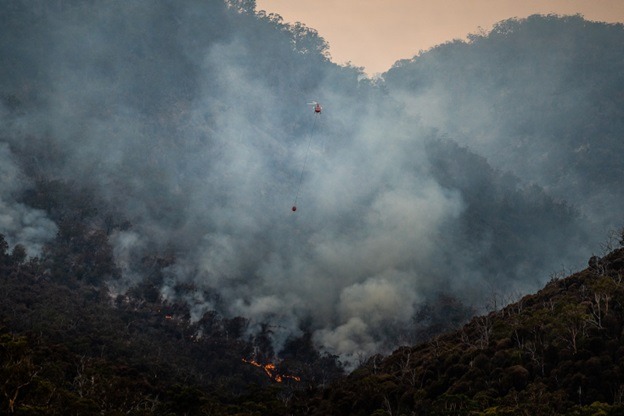Whenever we see a fire, we often think that the flames and the smoke are the most dangerous things about it. However, sometimes the methods used to fight the fire are just as dangerous, and one of those methods is the Aqueous film forming foam (AFF). This foam is used whenever water isn’t effective enough to overpower a fire, such as fires started by oil, grease, or petroleum.
If you’ve ever done the experiment where you poured oil and water into a jar and seen them separate, then you know that water and oil don’t mix. Add fire to the equation and water becomes even more useless, so that’s where AFFF comes in. But why is it used if it is so dangerous for humans?
What Is AFFF?
Aqueous film forming foam comes as a mix of water and chemical components, and whenever a fire can’t be stopped with water the foam is used. It works by cooling the fire down and by coating the fuel behind the fire, making a barrier that stops the flames. Additionally, the fire is smothered and that prevents oxygen from getting to the flames as well.
So it can be a very effective tool when fire is floating on a layer of oil or another water resistant fuel source. However, it is not without its dangers for now.
AFFF Is Dangerous For Humans
AFFF is very toxic, especially those variants that contain Perfluorooctane sulfonic acid (PFOS) and perfluorinated alkylated substances (PFOA). These chemicals exist in humans in very small amounts because we encounter them in everyday life.
They are used to make non-stick and grease resistant surfaces in cookware and on other items, and almost all humans have some level of these two chemicals in their blood.
However, they are harmless in small amounts and for the most part people don’t need to worry about them. But if the amounts get bigger they can cause all sorts of health problems, and they may have a link to cancer as well. Constant exposure to these chemicals through AFFF can cause a lot of problems for firefighters as well as those who were around the fire, such as oil rig workers.
Why Is AFFF Used To Fight Fires?
It can cause cancer and can lead to health problems, so why do firefighters still use it? Well, there are not too many alternatives available for petroleum based fires.
There are other types of foams (classified as class A foams) that do not contain any PFOS and PFOA substances. However, they are only able to extinguish wood, paper, and brush fires, just like water can.
Until a new substance is created to fight oil based fires, AFFF is going to be the best tool in the firefighter’s arsenal to handle these types of blazes. Although, more and more firefighters are starting to see the health and environmental effects of using AFFF, and aren’t using it unless absolutely necessary when facing an oil based fire.
Seeking Compensation for AFFF Exposure
If you were exposed to AFFF and developed health problems due to the exposure, then you might be able to seek compensation for AFFF-related damages with a lawsuit. You will need to work with a lawyer in order to do this, and it typically will take the form of a multidistrict litigation. This allows for all the lawsuits raised because of AFFF exposure to be brought before one judge in order to make sure that every case can be heard.
Your lawyer will then work to represent you and your specific medical issue, whether it is cancer or something else entirely. They will keep you in the loop and answer your questions as the proceedings go on, and then will help you get the compensation that you deserve.
Thankfully, The Dangers Of AFFF Are Being Understood
From the countless lawsuits, to the connection to cancer, to the environmental impact of the hard to biodegrade substance, the problems with AFFF are being more and more understood by all of those involved.
Various alternatives such as fluorine free fire fighting foam, dry chemical agents, and C6 firefighting foam concentrates. These all do the same thing as AFFF (smother and choke out a fire from its fuel source), but do so without the harmful chemicals.
Currently, AFFF is only being used on fires where the cost of the destruction or risk to human life outweighs the problems with AFFF. And pretty soon we might move away from AFFF all together.
Until that day comes, if you’ve been exposed to AFFF and have a health condition, then you need to reach out to a lawyer and see about getting the compensation that you deserve.

